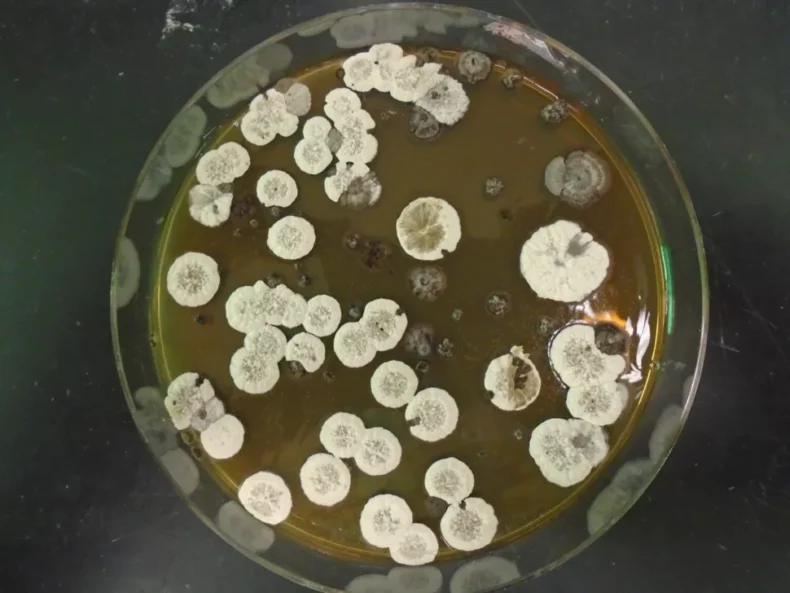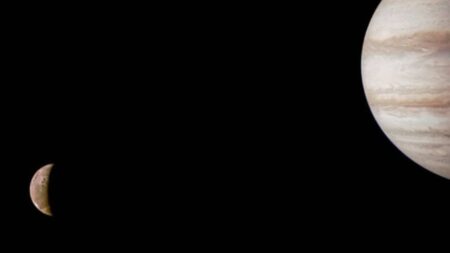Some of Earth’s most minor residents may be able to assist humans in exploring the last frontier.
Experts predict that future rocket launches may use a recently found biofuel based on an antifungal chemical made by the Streptomyces bacteria.
According to study team members in a news release, the potential environmentally acceptable substitute for rockets spewing carbon into the Earth’s atmosphere may also have a significantly higher energy density than currently used rocket fuel.
“Because these fuels are made from bacteria fed with plant matter, burning them in engines will significantly reduce the amount of added greenhouse gas compared to any fuel generated from petroleum,” project leader Jay Keasling, CEO of the Department of Energy’s Joint BioEnergy Institute, said in a press release.
Despite the fact that the research is still in its early phases, experts think that the novel chemistry of the fuel candidate molecules has immense promise for sending future launchers into orbit.

As fuels, many rocket engines nowadays use liquid oxygen and liquid hydrogen. To launch a rocket, even this relatively “green” combination could be added with additional boosters running on potentially more toxic fuel.
With an increasing number of studies concentrating on rocket launches and their influence on the Earth’s atmosphere, some environmentalists argue that spaceflight requires new solutions, particularly as the frequency of launches grows. (Other proponents of exploration, on the other hand, say that space has a low carbon impact compared to other businesses.)
Nonetheless, the bacteria-driven biofuel researchers claim that their fuel contender is also incredibly energetic, with the ability to propel rockets beyond their existing capabilities. POP-FAMEs, which stands for “polycylcopropanated fatty acid methyl esters,” are the essential compounds.
These molecules are made up of triangle-shaped, triple-carbon rings that stretch carbon-carbon bonds to a great 60-degree angle. According to the researchers, this strain has high potential combustion energy, and the unique shape enables fuel molecules to compress into a very compact space.
That combination of qualities, proponents argue, might be ideal for spaceflight since engineers constantly strive to reduce launch mass to save fuel and money.

The study focuses on two known instances of organic compounds with three-carbon rings produced by Streptomyces bacteria. While this lifeform is very difficult to make in a lab, a species in the genus S. roseoverticillatus was genetically examined, and scientists reported the discovery of jawsamycin in 1990.
Keasling’s team was encouraged to investigate the genomes of similar Streptomyces species for possible rocket fuel uses after discovering this “toothy” molecule with five cyclopropane rings. They later found the “essential elements” for POP-FAMEs in another strain, S. albireticuli.
S. albireticuli, like many of its cousins, proved to be a lab diva, first refusing to produce enough POP-FAMEs for researchers to study. However, after copying their rearranged gene cluster into the variation, the scientists discovered a “tame” relative that allowed for research.
According to the news release, “the resultant fatty acids include up to seven cyclopropane rings linked on a carbon backbone, giving them the name fuelimycins.” “These molecules need just one further chemical processing step before they may function as a fuel in a manner comparable to biodiesel synthesis.”

The next step in rocket fuel production would be to create enough molecules for field testing, which typically needs at least 22 pounds (10 kilograms). The researchers are not yet there, so the study is still preliminary.
However, current modeling data shows that POP-FAMEs may have an energy density of 50 megajoules per liter following chemical processing. This is a significant improvement over gasoline (32 megajoules per liter) and RP-1, a kerosene-based rocket fuel with around 35 megajoules per liter.
POP-FAMEs are structurally similar to experimental petroleum-based rocket fuel, indicating that these bacteria-produced compounds might be a viable alternative. Syntin, the usable fuel, was created in the Soviet Union in the 1960s. While Syntin was used in Soyuz rocket launches in the 1970s and 1980s, the Soviet Union finally abandoned the fuel due to high costs, explosive potential, and toxicity.
The POP-FAME team is currently focused on improving the bacteria’s production efficiency for combustion tests and creating molecules of various lengths to target applications for solid fuel, jet fuel, and diesel alternatives. In the future, scientists expect to utilize plant waste food as a source of carbon-neutral fuel production.
On Thursday, a paper based on the findings was published in the journal Joule (June 30).
Read More – Mysterious ‘hot Jupiter’ planets can form quickly or slowly, Gaia spacecraft reveals













